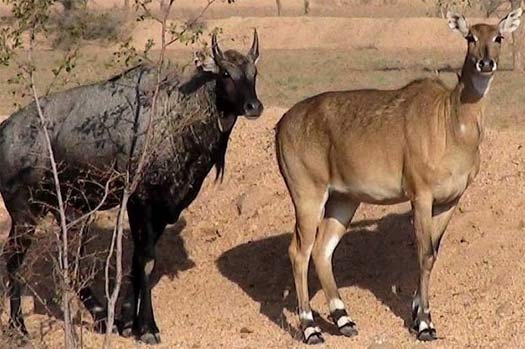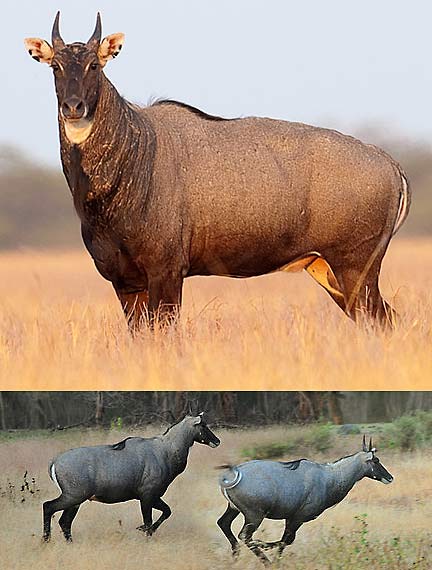Nilgai – Blue Bull of India
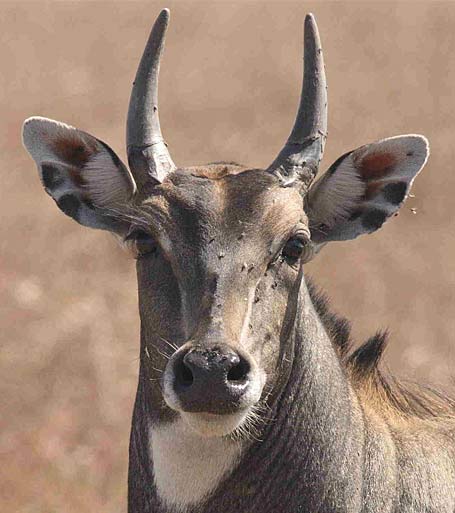
Sometimes referred to as the “blue bull” (or horse), it is the largest of all Asian antelopes and is one of the most commonly seen wild animals in all of India. Nilgai stand 3 feet 7 inches to almost 5 feet tall at the shoulder (1.1 to 1.5 meters) and have a length of 5 foot 7 inches to almost 7 feet (1.7 to 2.1 meters). They weigh between 220 and 680 pounds (100 to 308 kilograms); this makes them quite the imposing creatures. Their somewhat peculiar shape make them very interesting to the eye. The nilgai are very robust animals with bodies similar to horses, but have much smaller heads and small horns (only on the males), leading many to compare them to a cross between a horse and a goat. Females are a lighter brown color and slightly less robustly built. Both males and females have a short bristly mane.
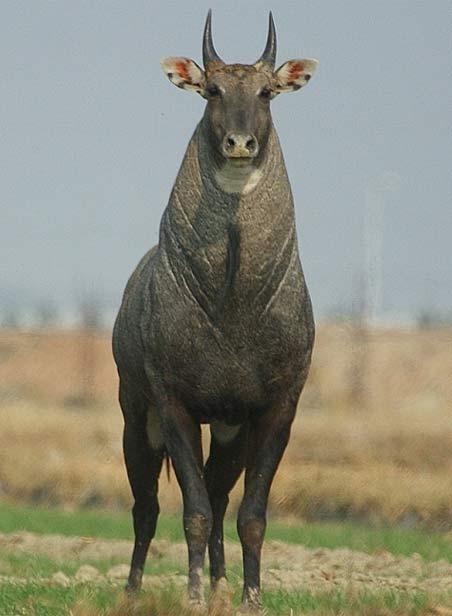
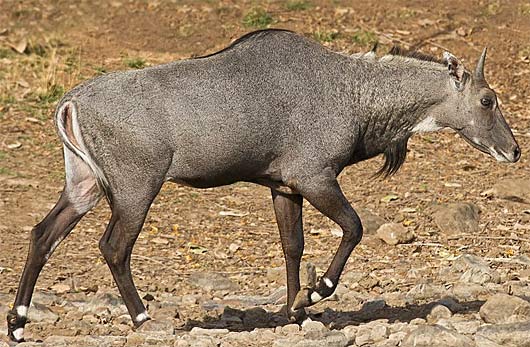
As for habitat, the large antelope prefer to live in grasslands and woodlands, avoiding dense forests in favor of plains and low hills covered in shrubs. They graze off of grass mostly, and have no problem crossing marshlands to get to their food source. Most of the world’s nilgai can be found in India, anywhere from the area around the base of the Himalayas, from Pakistan to the Bay of Bengal. Their range is subject to change as the landscape does (mostly due to humans); having once thrived in Bangladesh, they no longer live there. However, a herd was introduced in the 1920s into Texas and they are living on the King Ranch for “recreational purposes”. Some of these “Texans” have escaped throughout the years and this has resulted in there being a small but strong wild population in the U.S. State. Their populations tend to stay strong because of their robust build and ability to survive for days without water, but predatory cats and human hunting still threaten them on a daily basis.
